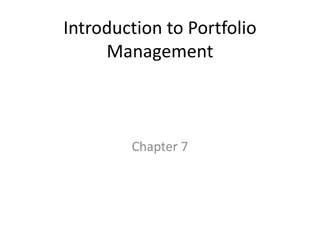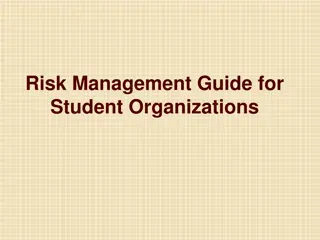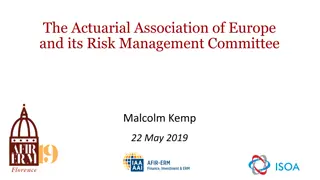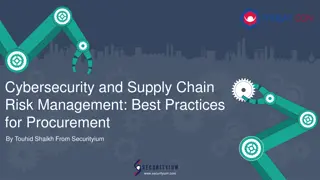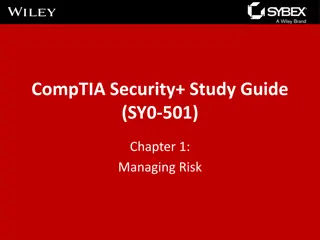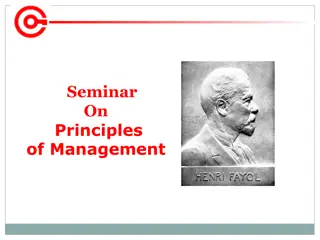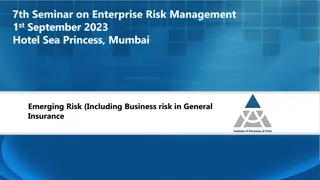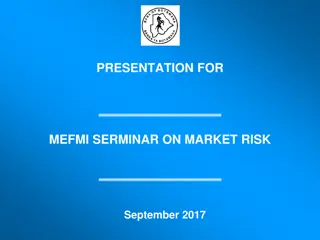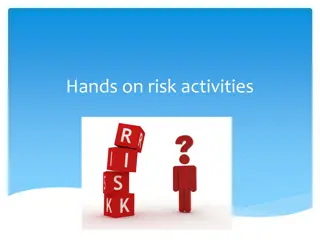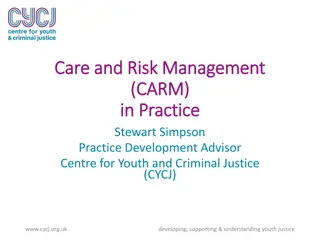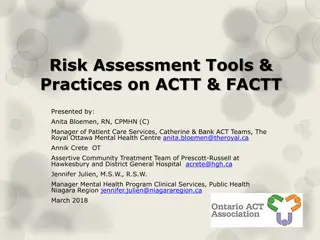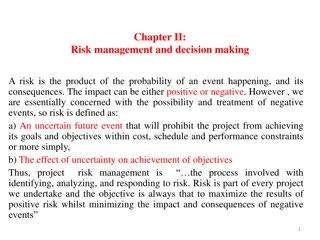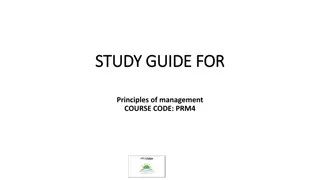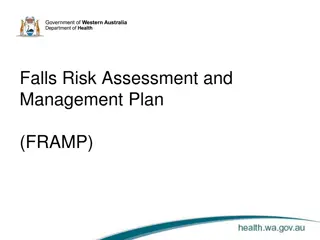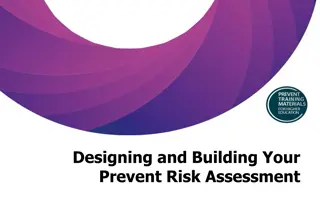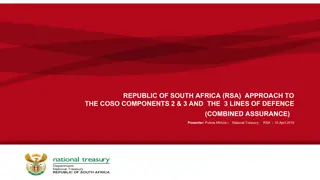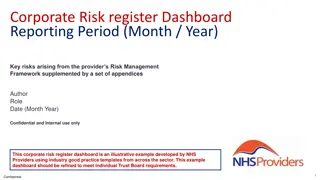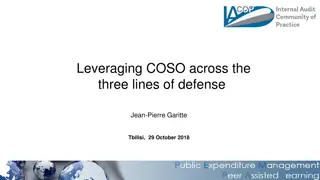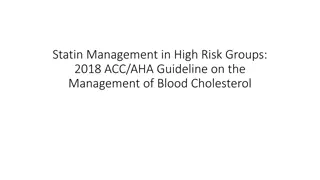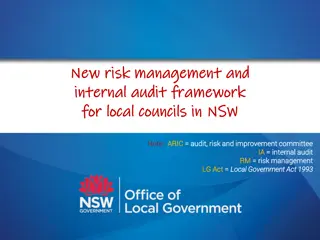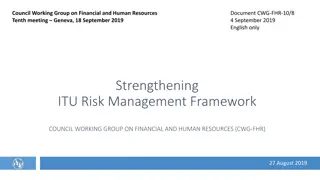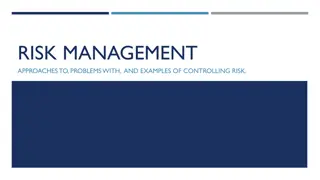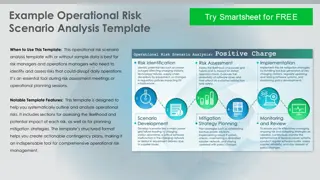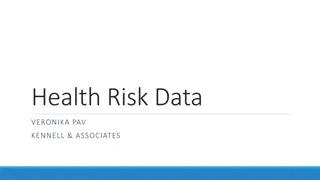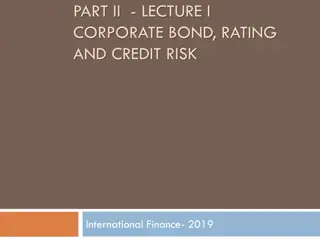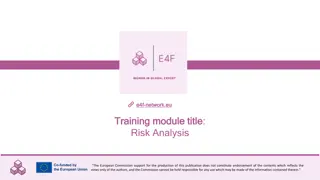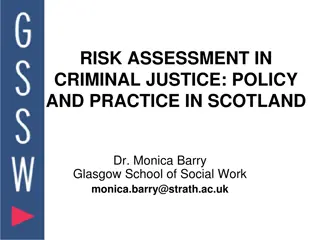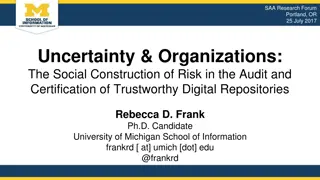
Essential Principles for Effective Risk Management
Risk management involves minimizing or mitigating risks that arise from uncertainty. In organizations, this uncertainty often stems from the marketplace. Ideally, risk management follows a prioritization process, addressing risks that pose the greate
Download Presentation

Please find below an Image/Link to download the presentation.
The content on the website is provided AS IS for your information and personal use only. It may not be sold, licensed, or shared on other websites without obtaining consent from the author. Download presentation by click this link. If you encounter any issues during the download, it is possible that the publisher has removed the file from their server.
E N D
Presentation Transcript
Understanding Organizational Context: Every organization is influenced to varying degrees by external factors such as political, social, legal, technological, and societal elements. For example, one organization may be unaffected by changes in import duties, while another in the same industry might face significant risks. Additionally, organizations differ in their communication channels, internal cultures, and risk management procedures. Therefore, effective risk management should be integral to the organizational process and add value. Engaging Stakeholders: Stakeholders should be involved in every step of the risk management process and kept informed about even the smallest decisions. It is essential for the organization to understand and utilize the roles that stakeholders can play at each stage. Aligning withOrganizational Objectives: When addressing risks, it is crucial to keep the organizational objectives in focus. The risk management process should explicitly address uncertainties, requiring a systematic and structured approach while maintaining a broad perspective. Ensuring TransparentReporting: Communication is vital in risk management. The authenticity of information must be ensured, and decisions should be based on the best available information with transparency and visibility throughout the process. DefiningRoles and Responsibilities: Risk management should be transparent and inclusive, taking human factors into account. Everyone should understand their roles at each stage of the risk management process. Establishing aSupport Structure: The support structure emphasizes the importance of the risk management team. Team members must be dynamic, diligent, and responsive to change, understanding their roles at each stage of the project management lifecycle. MonitoringEarly Warning Indicators: Track early signs of potential risks turning into active problems through continuous communication at all levels. Empower individuals to address threats at their level. Implementing a Review Cycle: Continuously evaluate inputs at each step of the risk management process identify, assess, respond, and review. Observations differ in each cycle, so identify reasonable interventions and eliminate unnecessary ones. Cultivating a Supportive Culture: Foster a culture of brainstorming, questioning, and discussion to motivate participation and engagement in risk management. Focusing onContinual Improvement: Continuously improve and enhance risk management strategies and tactics. Use learnings to reassess and better manage ongoing risks.






